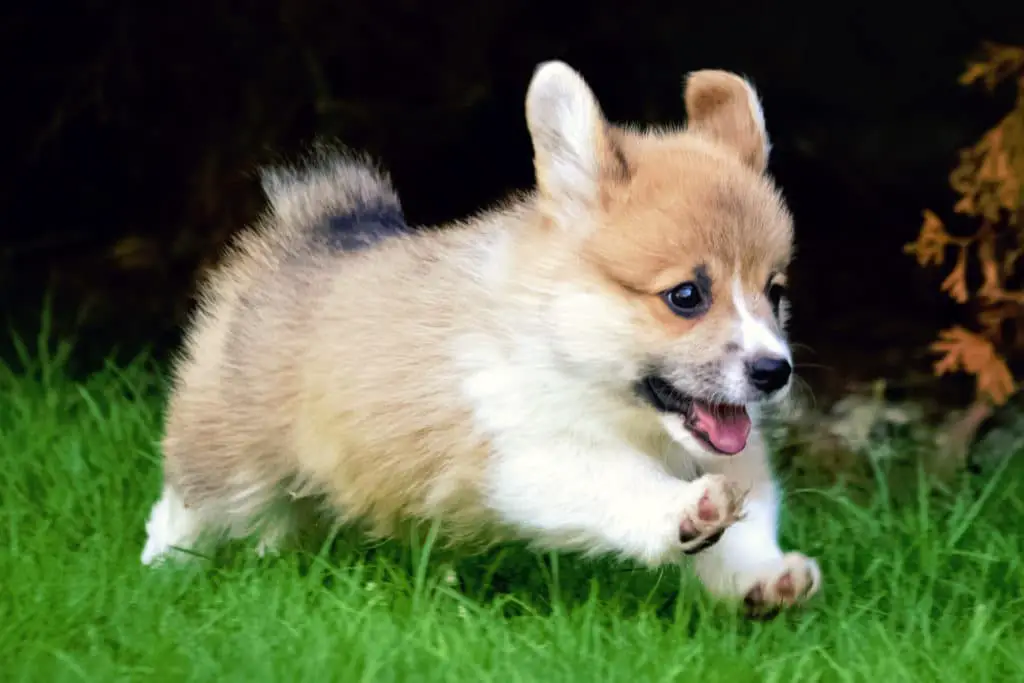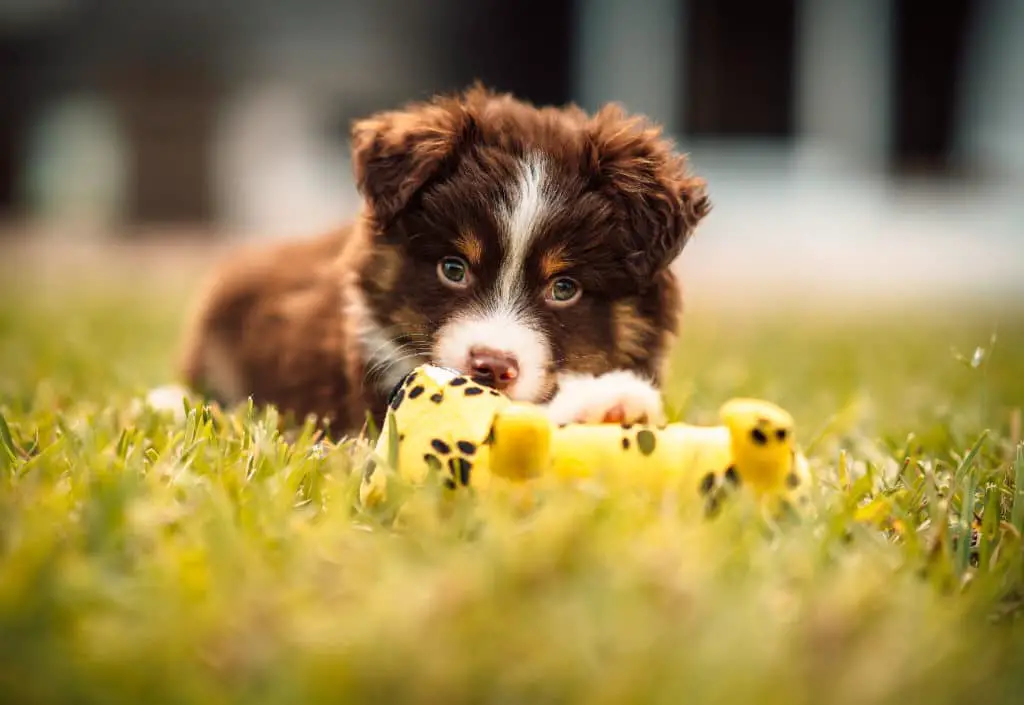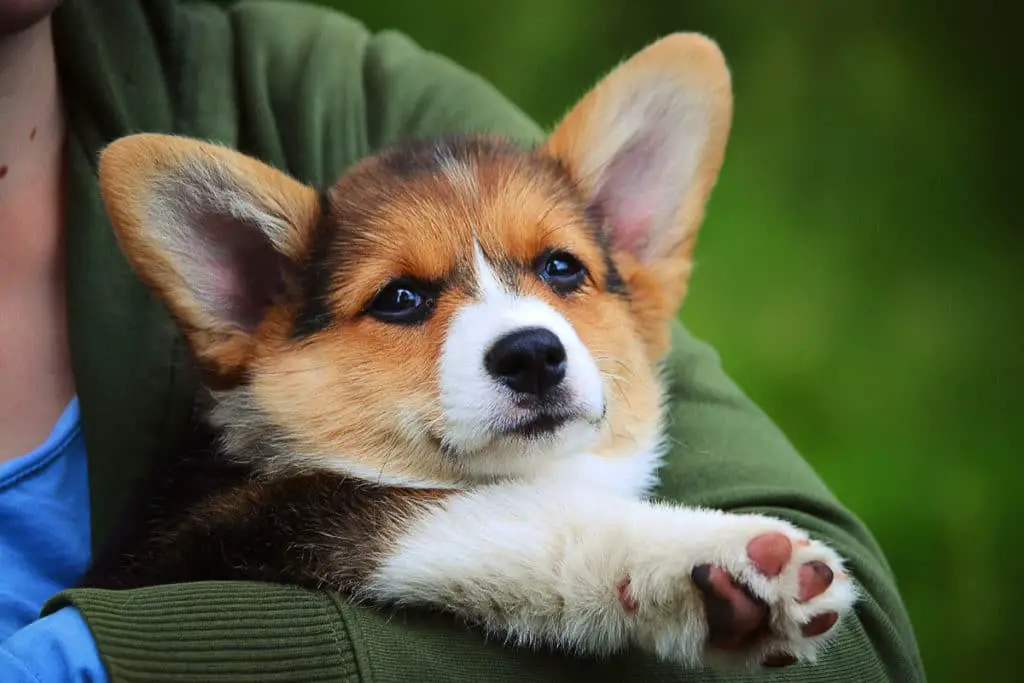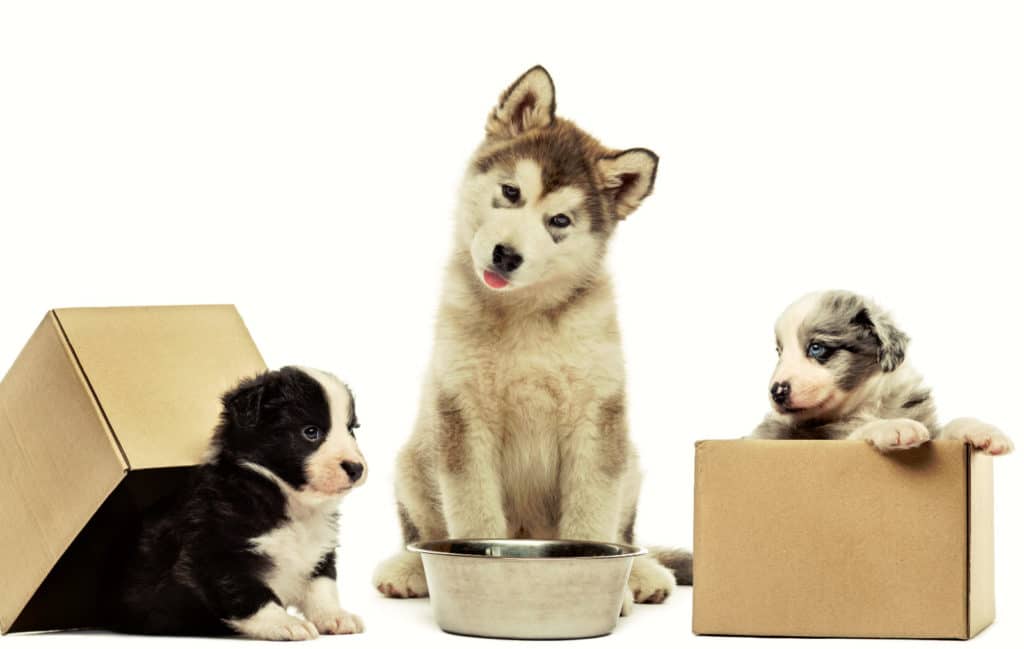If you are a dog lover and want to get a puppy, then the first question that comes to your mind probably would be, “How to pick a puppy from a litter?” When you get a puppy, there are several aspects you have to consider. First, you are not just getting a puppy. You are getting a years-long commitment. The puppy you choose will grow and be a massive part of your life for several years. So, your choice should be the best choice for you and your family. Therefore, you have to get the best puppy you can find. And the lucky thing is, you don’t have to be a dog expert to find out the best puppy from a litter. I’m going to give you some simple and easy to follow tips on how to pick a puppy from a litter.
Table of Contents
Basic Things to Look For
- Observe all little pups in the litter.
There would be all kinds of pups at the litter. If you observe them as a group, you might notice a puppy that would come out on top of the heap. If you want a more confident doggo, then that pup might suit you. If you want a more obedient doggo, then the pup in the corner would be good for you. But keep in mind that this doesn’t mean that you don’t have to socialize them or train them.
- Talk to the owner about their pups
Talk to the dog owner about any health conditions pups would have. Ask about any vomiting or diarrhea situation that the pups would have. For example, ask about the diet, would they eat dry dog food, or need other kinds of special diet. Ask the owner about what these pups would like to eat. And especially, ask the pups’ owner if they have been treated for internal parasites because every puppy should be treated for worms every two weeks when they turn two weeks of age.
- Examine their general look
Do the coats of the puppies look shiny? Are they dry or blistered? Can you see any bald spots on them? If you see them, then those are red flags. Because puppies should have healthy and shiny coats, they should not have any bald spots or redness.
- Watch how pups move
Check if any pup is limping. Puppies should use all four legs to hop around even they are not moving coordinately.
- There is no “Best pup of the litter”.
Best pup of the litter is a myth. Pup’s temperament will mainly depend on the household. If the pup goes to a loving family with tons of affection and love, then the puppy’s temperament would most probably turn out just ok. But keep in mind that dog breeders usually have a couple of show off puppies at the litter to show buyers. So, if there is a pick of the litter puppy, that pup would be bold and outgoing. So that puppy would require more training than you would hope for. Therefore, a puppy should have a moderate temperament and should be able to easily able to adapt to a new family.
- The puppy won’t choose you.
If you can’t find a proper puppy from a litter, do not be afraid to walk away. When others ask me about “How to puck a Puppy from a litter”, I’d always say that there are other litters you can go to. So if you can’t find a suitable puppy from one litter, walk away. As I mentioned before, you are not buying groceries. You are getting a severe years-long commitment by purchasing a puppy. So you don’t have to be shy to walk away if you don’t feel like you have found the best puppy for you.

What Should I do if I Find a Good Puppy?
But if you think you have found a good puppy for you, you have to focus on these aspects of that specific pup.
- Head – Usually, pups have a small soft spot on the top of their head. But suppose that weak spot is more significant than a dime. In that case, it’s a red flag because that pup would be prone to health issues such as “Open Fontanelles,” which refers to openings between bones or plates of the skull.
- Eyes – Eyes should not have redness and should be clear. If eyes look drained and has hair loss around the eyes, then that’s a red flag. Also, pups should not rub their eyes all the time.
- Mouth – Gums should be pink in colour and moist. The top and bottom teeth should align. But some breeds such as Terriers, Pekingese and, Bulldogs have a breed specific under bite.
- Nose – Pup’s nose having discoloured drainage is not normal, but it’s ok to have a slight clear discharge. The pup should also be able to breathe comfortably through the nose without making any noise.
- Ears – Ears should not have any smell. Ear flaps must have full, healthy hair. If the pup scratches ears frequently, then that’s a red flag.
- Skin – After you have checks all the pups overall, check them individually. If a puppy catches your eyes, then check for any hair loss. They should not have any redness on the skin or flaking. Also, check for any pus filled bumps or pimples.
- Body Wall – Check the pup’s belly for a bump around the belly button. If there’s any bump around the belly button, then that could be an indication of an umbilical hernia. If anything pokes out from that area, then that means a surgical correction might be needed.

What More Should You Look For..
After examining the pup’s body, you also should review the following,
- Touch Sensitivity.
If a puppy catches your eyes, then hold that puppy and touch their tiny toes and squeeze their little paws very gently. Also, touch that pup’s ears and face. If the pup bites your hands at the slightest pressure or yelp, then that pup would not be suitable for a family with little children. In this case, no response from the puppy is the best response.
- Check Cradling.
Cradle the pup in your arms and observe how it would react. Check if the pup struggles or try to mouth or bite. Does it try to lick you, or is it calm? If the puppy struggles at first when you cradle but then calms down and settles, it indicates that that puppy would be easier to train. If the puppy does not want to be held, then that suggests that that puppy would not be easier to train.
- Summoning test.
Try to call the puppy to you. You can sit or kneel to their level while doing this. Tap on the ground or make a clicking voice using your tongue to get the puppy’s attention. If that pup already has a name, call that name and check if the pup would respond to that. If the pup comes to you quickly, then that’s an indication that this pup would have a strong attachment to people. If that pup ignores you or gets distracted, that means that the pup might be independent. Then maybe that pup would requires an expert trainer.
- Check the Pup’s hearing.
Clap your hands from behind the pup or drop your keys where the puppy cannot see and check how it would react to that sound. Does the pup ignore it or gets startled by it? In this situation, the best response would be the puppy exploring the source of the sound.
- Check the Pup’s Vision
Roll a ball in the field of the pup’s vision and check if the pup would react to it. If the puppy watches the ball roll or try to play with it, that indicates that the pup has good vision.
- Check how the Pup would Bit.
Allow the puppy to mouth you until they start to bite your hand. When that happens, respond with a high pitch sound like “Ow!” Then, how the pup would react to your pain response. If they get excited to your pain respond rather than getting concerned about fear, then that would not be a good sign. Puppies that stop at your pain response are more likely to be dogs with better control over their mouths. But keep in mind that it’s normal if they start to nibble your fingers after getting concerned about your pain response.

Other Aspects you have to Consider Before Buying a Pup from a Litter
But these are not all. You have to decide on a breed based on your situation because the breed always matters on every way. So, before you decide on a breed, ask yourself these questions.
- Do I have kids?
If you have kids, then you can’t have an aggressive dog breed. If you have kids, you have to get the least aggressive dog breed as a safety measure. There are many dog breeds that are very suitable for this situation, like Beagles, Golden Retrievers or Labradors.
For more information read this on least aggressive dog breeds.
- Am I a lazy person?
Some breeds require constant attention, like English Bulldogs, Siberian Husky, Border Collie, Labradors. Then some breeds require a lot of extensive daily exercise like Dalmatian, Australian Shepherd, Rhodesian Ridgeback. If you are a lazy person, then a dog breed like this won’t suits you. So, consider your laziness before choosing a dog breed because a dog will change your daily life.
- Am I looking for calm or active pups?
Some people like to play with their pups. Some people like to keep the puppy on their lap and pet them. So, ask yourself if you want an active pup to play with or a calm one so you can pet them as you like without playing with them much.
- Do I want an independent doggo?
Some breeds are very dependent on their owner. Some dog breeds are very independent. These independent doggos are usually calm and don’t require much attention. One might think that “Wow, so an independent dog is always easy to maintain”, but that’s not always true. We don’t get a dog, so we can maintain them. We, in return, expect affection and love from that doggo. From my personal experience, I know that sometimes, we don’t get that desired affection and love from independent dogs because they don’t have to depend on us all the time. So, consider that factor before choosing an independent dog.
- Do I want a male or female doggo?
This is also an important thing factor to consider before buying a puppy. Male and Female doggos are very different. The size of male and female doggos of the same breed would be different. Their health conditions would be different, especially regarding the menstrual cycle. Beside, male and female doggos require different kinds of attention and sometimes, different kinds of training. So, regarding “How to pick a puppy from a litter”, you have to decide on a male or a female doggo before going to the litter.
- Do I stay at home during the day?
Some dogs can’t be left alone for more than a couple of hours. So if you don’t stay at home during the day (if you are going to work), then getting a pup that can’t be left alone for more than a few hours would not be practical. Also, as mentioned above, some doggos require much attention. So, if you don’t stay at home during the day, having that kind of dog breed would not be practical for you. However, if you work from home or staying home during the day, then you can choose a pup that can’t be left alone for a long time.
When you go to a litter, you can find these kinds of pups. These kinds of puppies would grow up to have very different personalities. So you can chose the type of dog you want in the future based on their behaviours as a pup.

- The People Pleaser
This kind of pup would always be the star of the litter. These pups would always come to you and try to play with you. So, you would get attached to this pup very quickly. This kind of pup would be likely grow up to be a playful doggo. This kind of pup would play with anyone and would be cheerful. They would be very active, so they would require much attention. Experts say that most likely, this kind of pups would be relatively hard to train.
- The Independent Puppy
This kind of pup would not play a lot with anyone. They would pay a little attention to you when you first visit the litter but then they would go on with whatever they were doing before you came. This kind of pup would not play with other puppies and won’t care if another pup tries to interact with them most of the time. These kinds of pups would not require much attention, and experts say that independent puppies are more likely to be easier to train.
- The Dominating Puppy
If you see a puppy at the litter that always tries to attack other pups without reason, then that would be a dominant puppy. They would most likely grow up to be more aggressive, and they would require more attention. Experts say that dominant puppies are usually harder to train since they tend not to listen to their owners.
- The chilling Puppy
This kind of puppy likes to chill. They will play with you or with other puppies at the litter if they wanted. They will show you affection if they wanted. Otherwise, they would do whatever they wanted. This kind is like a combination of people pleaser and independent puppies. This kind of puppy sometimes needs more attention, but not all the time. This kind of puppy would be most likely be very obedient and would be easier to train.
- The Shy Puppy
If you see a puppy at the litter that sits at the corner, that’s a shy pup. They would not play with you at first, but once they get comfortable with you and familiar with you, they would be very playful with you and would show affection towards you. This kind of pups would grow up with high-level emotional bonds with their owners. This kind of doggos would not be very social but would be very attached to their owner. They would require more attention from their owners and would be very obedient toward their owners. Experts say that these kinds of doggos are easy to train but would not be obedient many of people.
You can watch this video on how to pick a puppy from a litter to get a good idea about different kinds of puppies you can find from litters.
As personal advice, you should always bring another person when you go to pick a puppy from a litter. That person does not have to be a dog expert. However, in a situation like this, a second opinion always comes in handy. I’d always do this when I go to a litter even though I know a lot about doggos because you never know what you would miss.
FAQ
Many people have also asked me these questions regarding how to pick a puppy from a litter.
- What is the best age to choose a puppy from a litter?
I would say between 7-8 weeks of age. This would be a good age to check the puppy physically, and it would be easier to check their temperament at this age.
- Is it bad to get the last pick of the litter?
Nope. If you have researched how to pick a puppy from a litter and you don’t find any red flags from the last pick of the litter, you don’t have any reason to be afraid. Unfortunately, not everyone does the necessary research before picking a puppy from a litter. So, sometimes the last pick of the litter would be a perfect pup.
- What can we expect from the runt of the litter?
The runt of the litter is usually the smallest pup. It would be a red flag if you see a significant difference between the runt puppy and other pups. If that’s the case, the smallest pup would be prone heart defects and other congenital problems.
- Do runts of the litter have more health problems?
If the runt is smaller than other pups considerably, that pup would be prone to more health problems.
- How early can you tell a puppy’s temperament?
You can learn about the puppy’s temperament when they become about 4-5 weeks of age. But it would be easier if the puppy is about 7-8 weeks of age. But if you have experience checking the temperament, then you would have no problem with 4-5 weeks of age pup.



Pingback: What is Puppy Yoga and What can it do to your Pup?